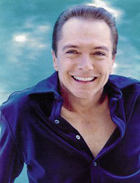
David Cassidy on the Web
Steve Braunias reviews a memoir by his all-time favourite hatchet journalist.
August 30, 2018
By Steve Braunias, Books Editor
thespinoff.co.nz/books
Robin Green! The Robin Green. “Robin Green!”, said the great music author Greil Marcus, when he met her at a Rolling Stone reunion in 2007. “I’ve always wanted to meet you!” Same, and now we all can.
I near jumped out of my skin when I saw this book, saw her photograph on the cover. I grabbed at it, babbled out loud. Robin Green! For years and years and years I’ve read her over and over and over, and it was just one story, the only story I ever knew she wrote. It was so devastating and poised, so funny and shocking. It was published in Rolling Stone in 1972. I read it in an anthology maybe six or seven years later. I’ve probably read it 10, maybe even 20 times since then. It’s a profile of pop star David Cassidy. It fucked him over and it was a stitch-up, a hatchet job, all that, but the point and the beauty of it was just how finely she pinned him like a butterfly in an exhibit case – it was a work of dark and very precise art.
Who was the artist? Who was Robin Green? I never knew anything about her, never saw her name again – until I recognised it in the credits of The Sopranos. She was a writer and executive producer. It wasn’t exactly an uncommon name but I divined that it had to be the same Robin Green. Genius never sleeps. The artist who made the David Cassidy story was surely the same artist who was making the greatest television drama series of all times. But then the trail went dead, and she slipped back into that rarest of states in the Age of Knowing: the unknown. Who was Robin Green?
Green, now 73, has written a memoir of her life and art – Rolling Stone, The Sopranos, bad sex, good sex, Joan Didion, Warren Beatty, Quaaludes, California. The cliché goes that you should never meet your heroes but this is almost always a nonsense. It’s fascinating to meet them; why would you necessarily expect to like them? What’s interesting about that? Green is intensely interesting, a strange, kind of loopy character, sometimes a fuck-up, sometimes lauded and blazingly successful, an outsider with an original mind, childless, driven, carping, complaining, kvetching – when he fired her, Sopranos creator David Chase accused her of having “a negative presence”.
The title forms the theme. Green was the only woman writer on the masthead at Rolling Stone, the only woman writer on The Sopranos. She writes from that perspective, and tells a different story to the male-dominated narratives of US popular culture. Green got fired from Rolling Stone, too, or at least had her name taken off the masthead, which had the same devastating affect as a dismissal; the reason was she failed to turn in a story she’d been assigned to write on the Kennedys, but she never told editor Jann Wenner that it was because she’d slept with one of them. Casual sex was a sort of habit with Green – she slept with Wenner, too – but she felt compromised by her afternoon lay with Robert Kennedy Jnr. Would a male journalist do themselves out of a brilliant career if they had sex with an interview subject? Would a male journalist specify attractive qualities about their lover’s body? Kennedy, Green writes, was hung like a horse. She wonders if it was a genetic trait.

“This has nothing to do with your being a woman!”, David Chase yells at her on the day she was sacked from The Sopranos. Green’s thesis is that it had pretty much everything to do with being a woman. Green was in on the show from the very beginning, and worked on it for five seasons, but found herself sidelined, marginalised. The only girl was doomed. “The writing room was becoming like a boys’ club,” she writes. “In the fifth season the show became more Mob-centric – turf wars between New York and New Jersey, power plays, posturing, and wiseguy banter. As always, really good work was done, but the fabric of the original conceit of the conflicted Mob boss was wearing thin.”
Did it become too much of a guy programme? I wished Green had told more about her contribution to the show, what sort of things she wrote; she only does that once, about the episode “Employee of the Month”, which dealt with Dr Melfi’s rape. “David’s idea was that Tony [Soprano] would exact revenge. I thought it would be more interesting if he never found out about the rape, so the show would be more about Melfi’s moral struggle over whether to tell him or not, sure that if he knew, he’d probably kill the guy.”
But the thing I most wanted to read about was the Cassidy story. How did she go about it? Did she win his trust, and betray him, in the classic manner of journalists and their subjects? Did she pretend to like him, did she laugh at his jokes, did she nod sagely and encouragingly when he said stupid things? Or was she invisible, giving nothing away, wordless? The story is a classic piece of writing not simply because of its malice, but in the way that Green manages to make herself completely absent. You never know she’s there even though she describes intimate scenes – Cassidy in the back seat of a limousine, Cassidy’s best friend sunbathing naked, Cassidy looking angrily out the window of a taxiing plane at his fans waiting for him on the tarmac. She makes no comment. Everything is implied. It’s probably the most detached interview I’ve ever read.
She gives a step-by-step account of an earlier story she wrote for Rolling Stone, a profile of Dennis Hopper; I tracked it down online, and it’s another classic, just as detached, perhaps even more obliterating of its subject. How did she go about it? “I decided to relate everything I’d experienced, from the airport to dinner to the drive through the desert to Hopper’s compound, in the third person, casting a cold eye on events as an observer.”
So very cold. When it was published, an admiring editor from Esquire called Rolling Stone, and asked, “Who’s the new bitch?” It was meant and taken as a compliment. A star was born. She had no background in journalism, had only ever written a few short stories in the manner of Hemingway; she had no intention or ambition of becoming a journalist, and found herself being interviewed by Jann Wenner almost by chance. He asked her about her work experience. She said she worked as a secretary at Marvel Comics. He asked her, “What was it like?” She answered, “I answered letters from pathetic fans. I answered the phone for Stan [Lee, the head of Marvel, who created superheroes such as The Hulk]. He was nice, kind of nerdy. He wore a wig. His name was really Stan Leiber. His wife and daughter used to swan in and out of the office inbetween shopping. They treated him like some sort of joke.”
Who the hell talks like that? It’s a dazzling speech. She reports that Wenner sat back and regarded her, his head cocked. He immediately commissioned her to write a story about Marvel. Her career at the magazine was brief, spectacular. Greil Marcus told her at the 2007 reunion that she “took on ambiguous and difficult stories”, and that “the reader got the idea there were both real people in the stories and a real person behind them”. She wrote cover stories, she took drugs with Annie Leibowitz, she thought Hunter S Thompson had an awesome body. She kind of lost the plot after Wenner took her off the masthead, and she drifted, for a long, long time, eventually returning to journalism as a restaurant critic. Her reviews prompted an old friend to ask her to try out writing for television: “I’d been watching TV one day and seen a show in which one character calls to another, ‘Emergency! Emergency! Get the truck!’ For the first time, it occurred to me that someone had actually written those lines, and I thought, ‘I could do that.’”
She really could. The artist who wrote for The Sopranos is some kind of genius, blessed with the ability, she claims, to “remember every word of every incident”. It explains her amazing ear for dialogue in the Cassidy story. Much of what he says are asides, remarks to friends, thinking aloud; much of what he says is used against him. The poor devil is torn apart piece by piece, and presented as a pathetic hypocrite. It’s also a character study of someone fragile, a loner, conflicted, unhappy, sensitive, complex.
How did she go about it? She doesn’t say. She reflects on the story, and the damage it caused to Cassidy’s career. “I can see now that I was, in much of my writing, on a one-woman crusade to out the pretentious, the phoney, the self-deluded, the boorish, the cruel.” But this is an accurate description of someone else – Dennis Hopper. “David Cassidy,” she writes, “wasn’t any of those.” Hopper got what was coming to him. What did she feel about Cassidy? Did she like him? Did she hate herself for what she did to him? All writers, Graham Greene famously said, have a sliver of ice in their heart. A cold eye on events as an observer….Coldly, cruelly, casually, “a negative presence”, she writes one last thing about Cassidy, finishing him off, done with him for good, farewelling the subject of her timeless masterpiece: “He was merely lame.”
The Only Girl by Robin Green
